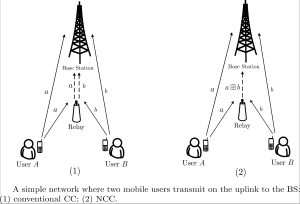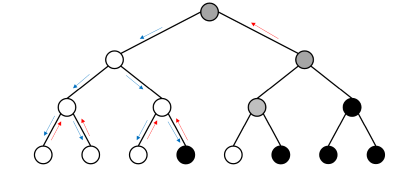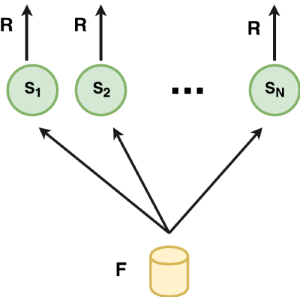We are generally interested in problems in wireless networks, information theory,
modern coding theory and machine learning.
|
Recently, machine learning (ML) has been widely investigated in the signal processing and communications problems,
such as decoding, estimation, and more. ML models can enable us to have a convenient optimization capability, and thus,
we can use them without any underlying accurate mathematical model. Currently, most existing algorithms in communications
are highly depended on precise mathematical models. However, in practice tractable mathematical models cannot reflect many
imperfections and nonlinearities and can only work as rough approximations while these issues are non-negligible.
ML can fix this drawback and offer algorithms without mathematically tractable models.
|

|
|
In conventional cooperative (CC) systems each relay transmission must be coupled with a source transmission.
This time-slot usage leads to the throughput loss in multi-source cooperative networks. Network-coded cooperative (NCC)
system has been proposed to improve the throughput of cooperative systems. The main premise behind NCC is that each relay
linearly combines packets received from multiple sources, and then transmits the resulting network-coded packet to the destination.
Thus, NCC reduces the relay transmission time, and network throughput is significantly increased.
|
 |
|
Channel coding have been recently proposed and used in real-world distributed storage systems (DSSs) such as Microsoft Azure
Storage and Facebook HDFS-RAID. DSSs are used to store large-scale data in a secure and reliable way. A DSS uses several storage nodes,
called data nodes, to store data. In such storage systems, data node failures occur frequently due to several reasons such as
hardware/software problems associated with the underlying network or data nodes. In order to recover the lost/erased data,
redundancy is required. Erasure codes are the best approach to provide redundancy in an efficient way.
|

|
|
As any modern communication system, channel coding is a part of 5G to ensure reliable and robust data transmissions.
A new class of channel codes, called polar codes, are proved to achieve the symmetric capacity of memoryless channel
under successive-cancellation (SC) decoding. These are the first capacity achieving codes with explicit encoding and
decoding algorithms. These attractive theoretical properties of polar codes make them a candidate to be used in 5G
for control messages. The most important challenges of polar codes are their high decoding latency and large
memory/computational complexity which must be resolved for 5G to achieve its extreme low-latency and low power usage goals.
|
 |
|
Wireless distributed computing (WDC), where different wireless devices collaborate with each other to complete a
complex task, has recently gained a lot of attention. This is due to an increase in the computational power of
wireless devices, such as mobile phones, to the level that they can perform computationally heavy jobs such as
reality augmentation and object recognition. In a WDC setup, a large processing task is divided into smaller
sub-tasks and then distributed among the wireless devic b es acting as servers. Then, each server focuses only on
finishing its assigned sub-task and reports the result back. In comparison to using a central cloud with high
computational power, WDC has its unique benefits.
|
 |
|
Introduced in 2010 by Thomas Marzetta, massive MIMO has become the next revolution of wireless systems that
will play a major part in 5G industry. The basis of massive MIMO is the use of a large number of antennas
(practically in the range of 64-128) at the base station. With the use of massive MIMO, very high data rates
can be provided to a large number of wireless users. As an example, Sprint wireless have obtained 3.4x and 8.9x
gains in downlink and uplink sum rates in a LTE network in Texas, USA by using a 64-antenna base station instead
of a 8-antenna base station. Research on massive MIMO ranges from design of beamforming methods, investigation of
hardware impairment effects, and reducing pilot contamination to designing transmission schemes. Most recent
developments of massive MIMO include cell free massive MIMO, 3D beamforming, and design of antenna arrays.
|
 |





